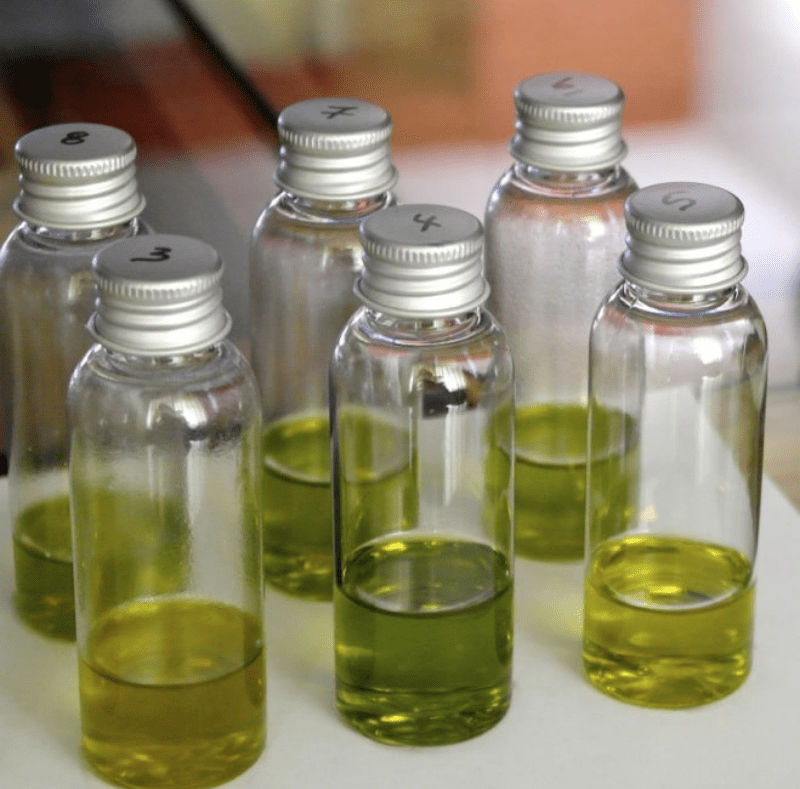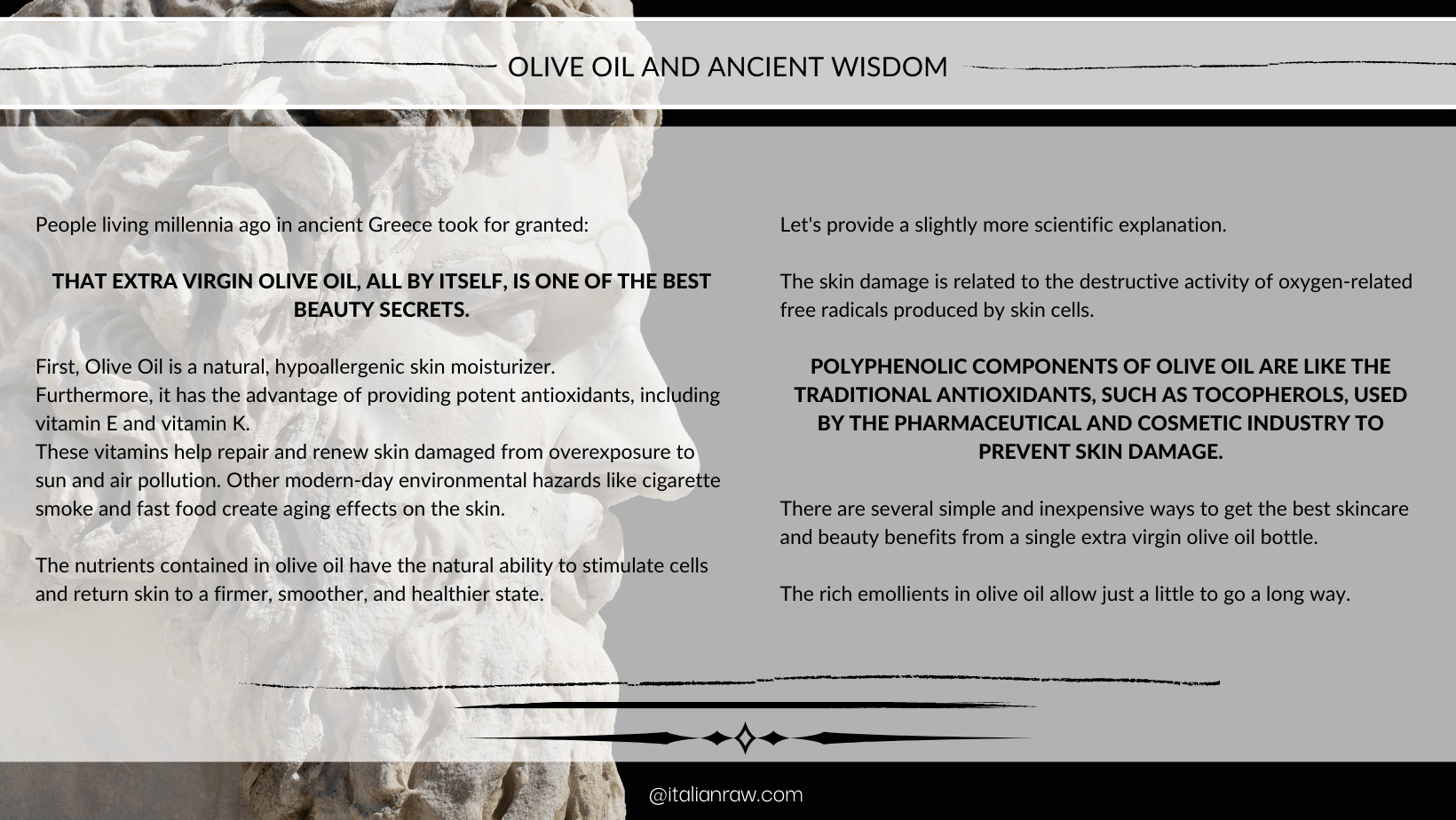
OLIVE OIL TASTING 5: LET’S PRACTICE OIL TASTING
LESSON 5
Tasting Olive Oil “In Pills” Blog Series.
Do you want to become a real Olive Oil expert and be able to taste its flavors and aromas?
It’s necessary to slow down and take time to “observe” and appreciate aromas to move your approach to food from simple eating to a pleasurable experience.
Here we go with some basic rules and notions you need to be able to enjoy your food and your EVOO the most.
Not only what we eat but how we eat influences how we feel
Remember: when you taste olive oil, taste buds and other receptors capture the oil flavor, and they send it to the brain. The brain recognizes the message and reacts to it. But the brain can only recognize and respond to what it has already experienced and stored in its memory!
Let’s perform our first Olive Oil Tasting!

1
GET READY
- Remember that our senses get tired fast, so don’t perform more than 4 olive oils per session.
- Senses perception is personal because of our physiological and cultural differences.
- As you’ve never paid attention to what your senses perceive, you may not know what to look for and how to describe it.
- Do some practice first by smelling and tasting a wide variety of food more consciously, allowing your body to feel and your brain to receive and describe.
TASTING STEP TO STEP

STEP 1. SMELLING



During this phase, you’ll be looking for and describing both negative and positive aromas.
Remember, you’re looking for quality olive oil!
- Pick the olive oil-tasting glass and keep it covered.
- Place it in the palm of your hand and hold it with your fingers closed around it.
- In this position, you will be able to warm up the oil a little.
- Slowly rotate the glass to increase the surface contact with the oil and release more aromas.
- Remove the top and smell the sample of oil.
- Smell for 5 seconds and make a pause of 3/4 seconds.
- Repeat 3/4 times.
You will get a first idea of the olive oil sensory characteristics and defects during this phase.
STEP 2. TASTING - Strippping



During this stage, you will have a better idea of possible defects, and you will be able to determine and describe the oil flavor.
( Remember) Flavor means:
- Basic tastes ( sweet, salty, sour, bitter, umami)
- Mouthfeel sensations (temperatures and textures)
- Aftertaste and Flavors ( or retro-nasal aromas)
Let’s taste and Strip it!
- Take a sip and distribute the oil through the mouth ( oral cavity: tongue, gums, roof).
- Allow oxygen to come in contact with the oil. Breathing will help the oil release flavors. How? Smile with closed teeth and breathe in and out. Take sequential short breaths. You’ll make a slurping noise!
- Swallow or spit the oil.
STEP 3. WHAT TO LOOK FOR DURING THE OIL TASTING?



DEFECTS
According to IOC an extra virgin olive oil is an oil that has no “organoleptic defects”, which are the characteristics of food experienced by our senses, like undesirable aromas and flavors.
WHY?
Undesirable aromas and flavors are perceived by smelling and tasting, and they are a red flag!
In fact, defective olive oil is low-quality olive oil with fewer or no properties that could potentially encourage good health.
If olive oil is defective, it’s because of some scenarios: improper harvesting, production or storage like:
- Bad conditions of olives
- Incorrect harvest or transportation
- Unsanitary bottling methods, containers, production facilities
- Negligence in handling or storing the olives or the olive oil
- The oil has been mixed with other oils
- The oil has been exposed to light and heat
- The oil is too old










Pingback: Exploring Olive Oil in Middle Eastern Culture - Italianraw